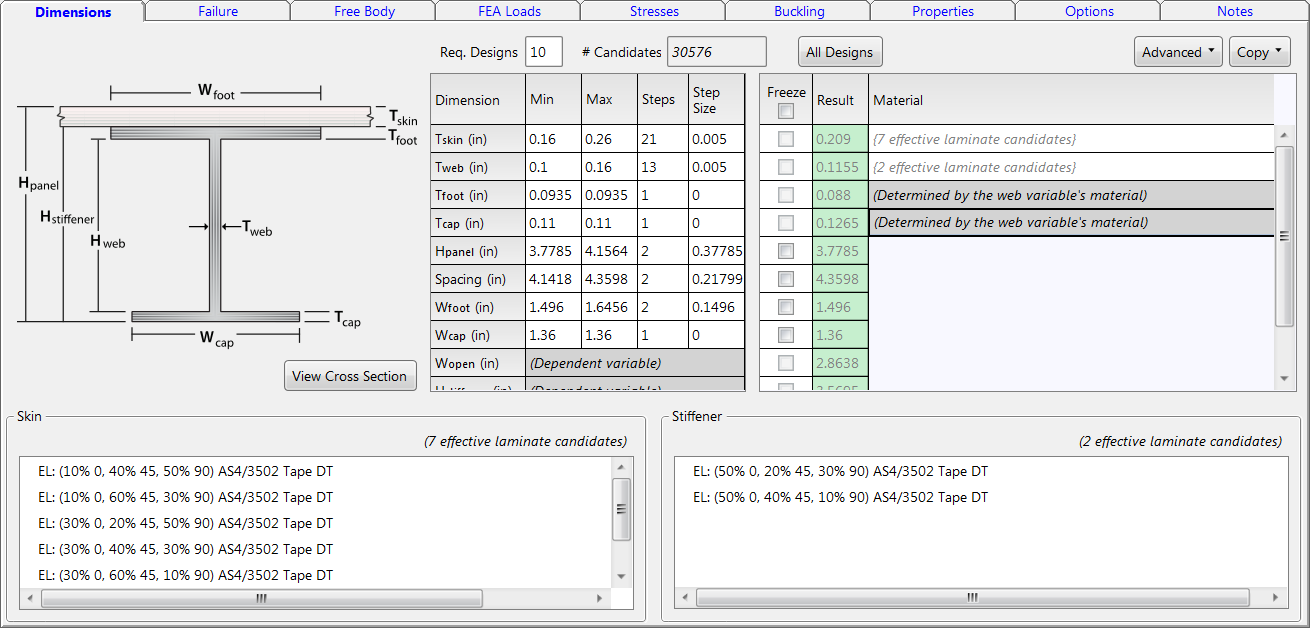
In detailed sizing and final analysis modes, continuous or laminate materials can be selected. Continuous materials are materials whose thickness varies continuously. The most common example are metals. Laminate materials are materials whose thickness is predefined by the material definition itself. For example, the thickness of a laminate is predetermined by the number of layers and the thickness of each layer.
If a continuous material is selected then the thickness is treated as a sizing variable. It is optimized by specifying by a minimum value, maximum value, and the number of steps.
The following materials are treated as continuous:
The figure below shows the Tskin and Tweb objects of an I stiffened panel to be sized with a continuous material. Multiple effective laminate materials were selected. Notice the thickness of these objects are defined by the range specified in the dimensions table.

In laminate mode, the thickness has already been locked in via the material definition. Therefore, the thickness is no longer treated as a sizing variable.
The following materials are treated as laminates:
The figure below shows the Tskin and Tweb objects of an I stiffened panel to be sized in laminate mode. Since the total thickness of the laminate is defined in the material definition, the sizing variable bounds are ignored (gray fields in form).

